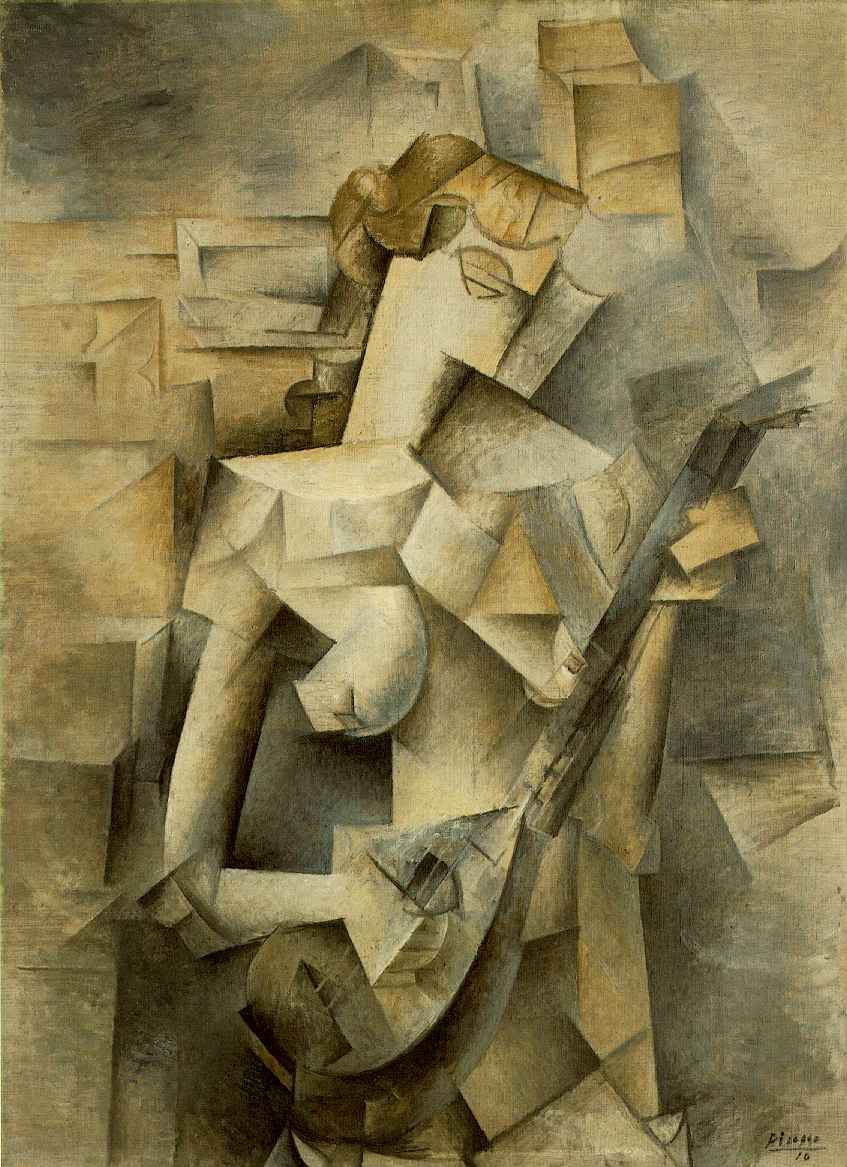Paintings used to essentially be the same way. The artist would paint assuming one vantage point and paint only considering that angle. Picasso and the cubist movement were able to revolutionize this idea. For paintings of Picasso's, like "Girl with a Mandolin (Fanny Tellier)", there is no set angle. The perspective can be whatever one tries, or chooses, to see. There is shading and shadows from many different places, yet somehow they all work as a cohesive unit.
Saturday, February 23, 2013
Girl with a Mandolin (Fanny Tellier)
The most remarkable thing about Picasso's work is undoubtedly his ability to transcend the limits of the one dimensional human mind. When one looks at a work of Picasso's during his Cubism phase this is especially prevalent. Traditional art has typically always included some type of regard for who it's audience is, and where that audience should be. This take on perspective ranges in its application from back in ancient art where sculptures dd not have a back or a side to them, because they were meant to be seen from one angle, ie the "front." The artist was limiting his viewer in a way by doing this. By showing only one perspective, there was no choice as to the interpretation. Later, however, sculptors started adapting to make art that could be seen from a number of different angles and the audience was not confined to one perspective.
Paintings used to essentially be the same way. The artist would paint assuming one vantage point and paint only considering that angle. Picasso and the cubist movement were able to revolutionize this idea. For paintings of Picasso's, like "Girl with a Mandolin (Fanny Tellier)", there is no set angle. The perspective can be whatever one tries, or chooses, to see. There is shading and shadows from many different places, yet somehow they all work as a cohesive unit.
Part of the indication of this technique is that the human experience is not concrete. By allowing more viewer analyzation Picasso is allowing his audience to also become part of the art. It is no longer something definite, but something that changes with whoever is looking at it. Further, the dimensions that the art is set in go beyond visual stimulation. With "Girl with a Mandolin (Fanny Tellier)" , the element of music is also expressed through the movement the painting conveys. What I immediately drew a connection to in this sense was Picasso's "Three Musicians". I remembered seeing a video when I was younger where the same painting actually did move. I found the video, and it turns out that it is from Sesame Street and thus aimed at young children. By having the movement incorporated with the technology we now have access to, even when the video is over, movement and music are still even more associated with the art. Despite the movement being aimed towards a younger viewer, the idea of using video to make art almost "adapt" in a way to modern times and interpretation may be something to look at for the new visualization space.
Paintings used to essentially be the same way. The artist would paint assuming one vantage point and paint only considering that angle. Picasso and the cubist movement were able to revolutionize this idea. For paintings of Picasso's, like "Girl with a Mandolin (Fanny Tellier)", there is no set angle. The perspective can be whatever one tries, or chooses, to see. There is shading and shadows from many different places, yet somehow they all work as a cohesive unit.
Subscribe to:
Post Comments (Atom)

No comments:
Post a Comment